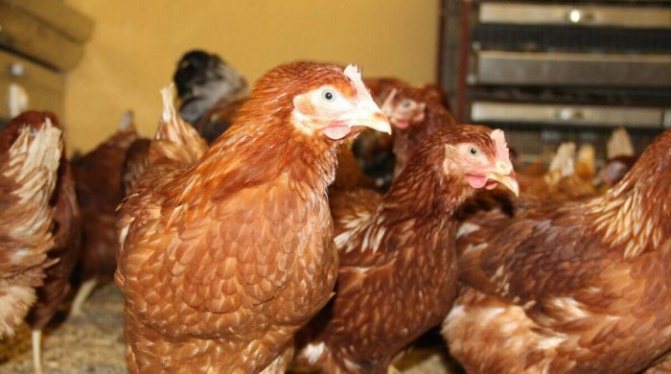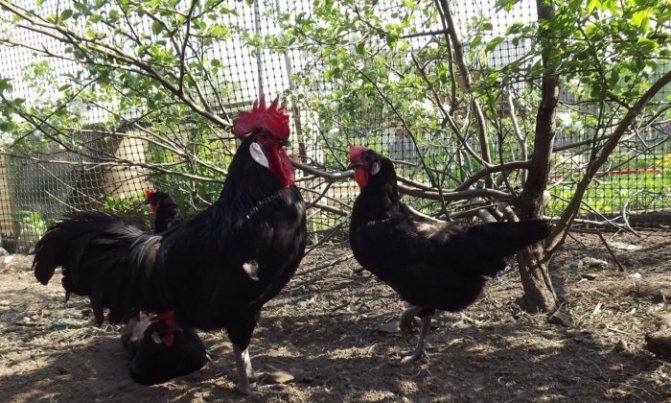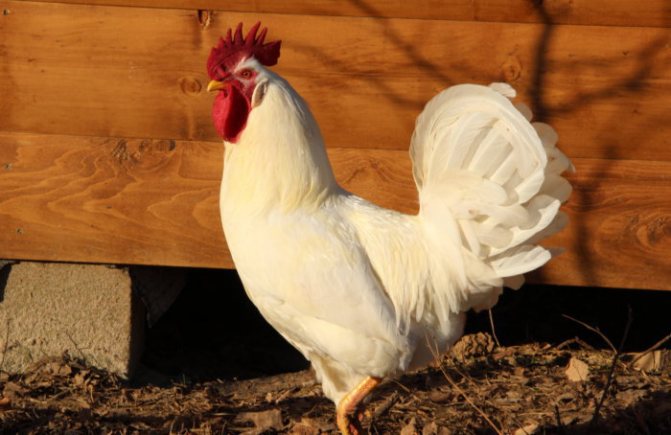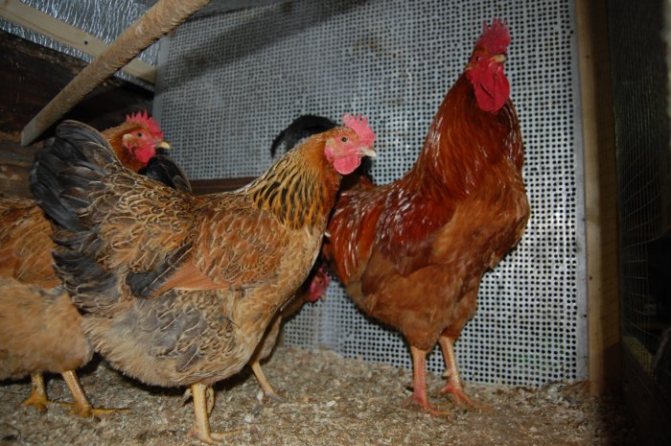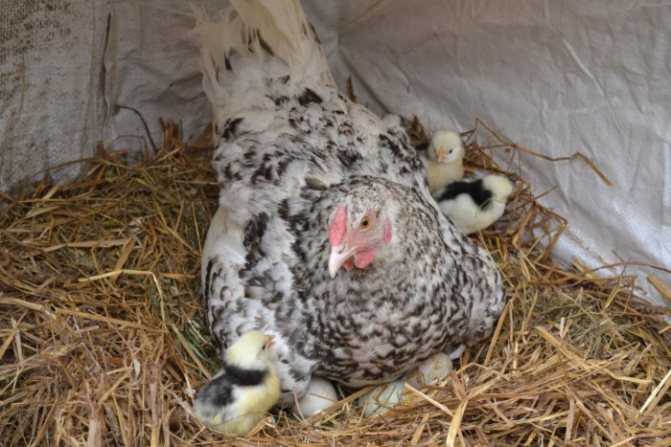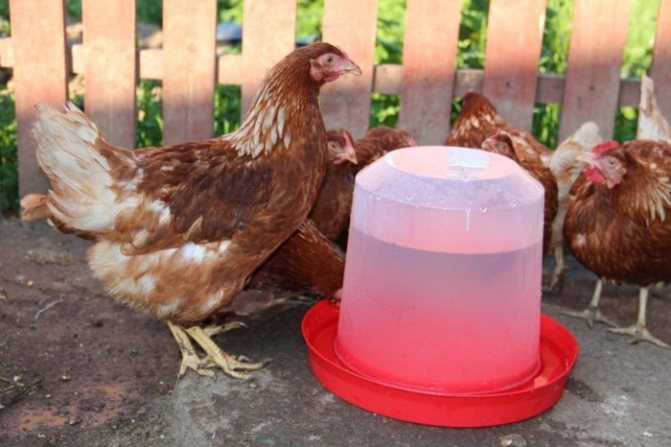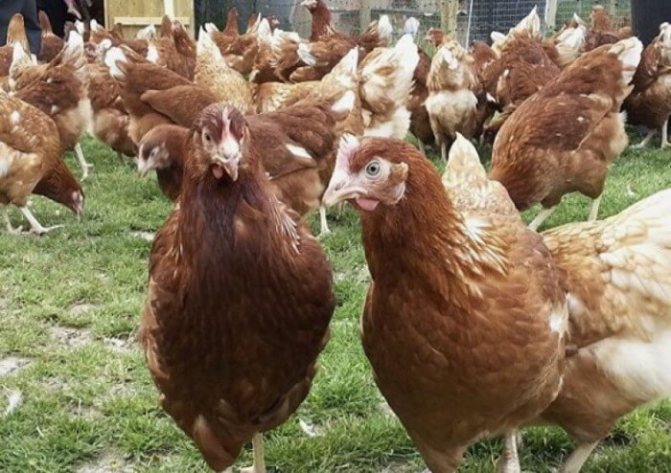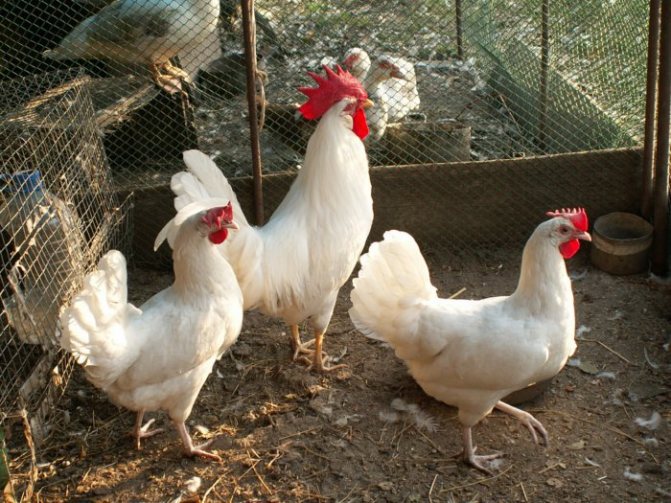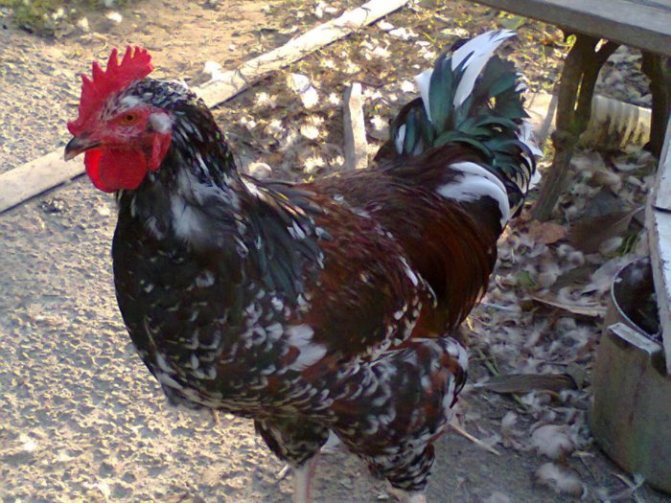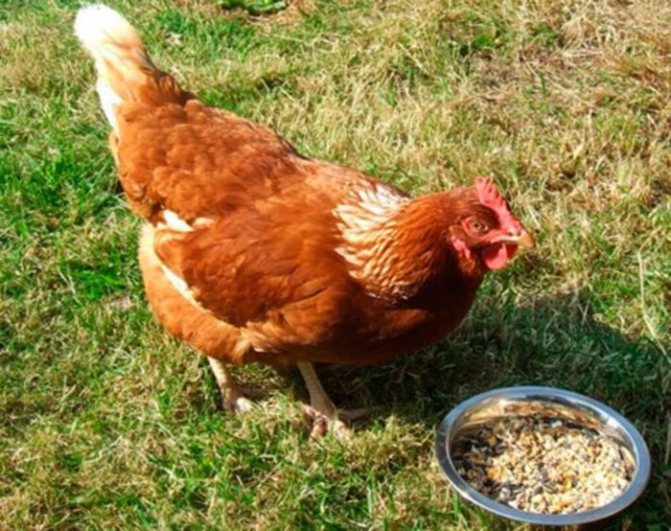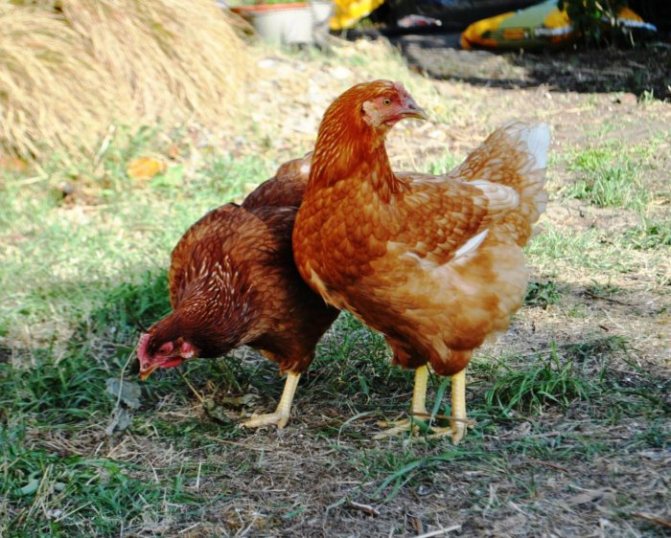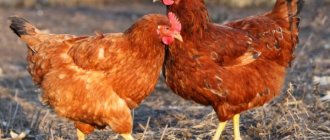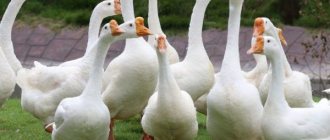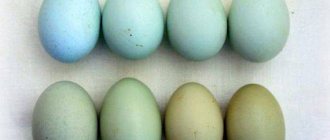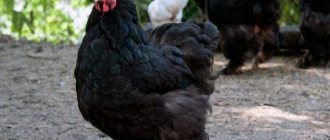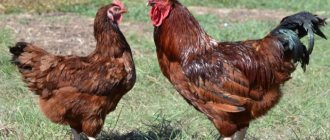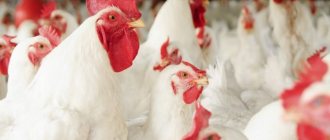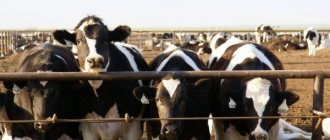Practical chicken breeding is of interest to many farmers and some summer residents who move to summer cottages for the summer. What could be better than a fresh egg for breakfast, laid by your own chicken? However, entrepreneurs with a commercial streak do not bypass the breeding of chickens. From the point of view of organizing a small business, raising chickens for the sake of eggs is most justified.
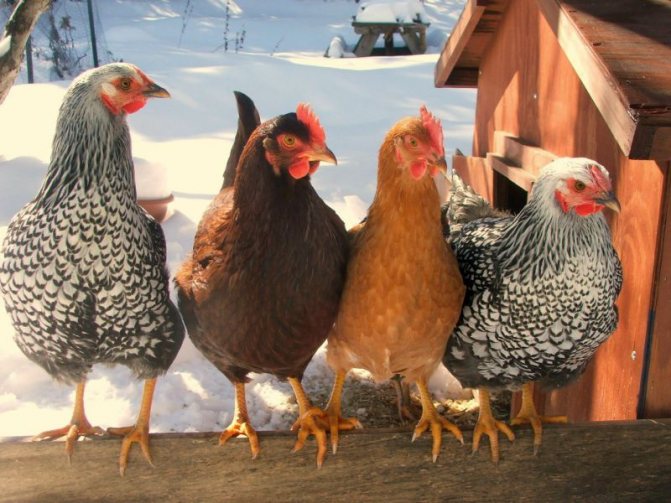
What breed of chickens to choose for breeding in order to obtain eggs
But is any chicken good for this? Of course not. According to their purpose, chicken breeds are divided into egg-laying, meat and egg, meat, decorative and fighting. And if the egg production of the first in a year can reach 300-350 eggs per hen, then the chickens of the last three breeds are unlikely to give more than 100 eggs per year, and the average egg weight will also differ several times. The largest eggs are found in laying hens of egg-laying and fighting breeds.
Why not take ordinary mongrel chickens into breeding, because their chickens will probably cost less? Of course, this can be done, but good results should not be expected with this approach. A dozen outbred chickens will still feed one family, but it is unlikely that it will be possible to organize the production of eggs for sale. Breeding work to improve and consolidate certain qualities of chickens is not in vain carried out by specialists for several generations of chickens. Breeding a new breed can take several decades, and all in order to achieve the best performance.
Video - The most profitable chicken breeds in poultry farming
Leghorns
The breed appeared in the 19th century. Differs in endurance and high adaptation to any climatic conditions. The average weight of leghorns is about 2 kg, the egg production rate is 300 pieces in 365 days, up to 370 eggs can be obtained from some chickens. On average, one egg weighs about 60 grams. The survival rate is 92%. The breed has a lively character, they can make noise, but they do not like extraneous sounds. There are two varieties with white and brown color. Brown chickens lay eggs with dark-colored shells, and white ones, respectively, with snow-white ones. The highest indicators of productivity fall on the first 365 days of the birds' life, then these qualities decrease.
Birds carry a specific gene that is responsible for dwarfism. The weight of a small bird is 1.5 kg. Despite their small mass, they are very fertile and from one bird you can get about 260 eggs in 365 days, with an average weight of 60 grams. The first clutch occurs at the age of four months, and by the age of six months, large products are obtained from them.
It is common for mini Leghorns to be demanding on the food supply. Lack or excess of nutrients has a negative impact on the overall health of young animals, which is characterized by slow metabolic processes. An overabundance of protein components leads to bending of the fingers, then the young fall to their feet and lose the ability to move. It is necessary to carefully observe the balance in the content of all trace elements, and the protein should be easily digestible by the chicks' organism.
This breed is used to obtain environmentally friendly products in Switzerland. Dominants can be grown by both experienced and novice breeders. Chickens are distinguished by their endurance, perfectly adapted to various climatic conditions.They live well in heat and severe frosts. Another feature can be called undemanding to the food supply. Dominants can get beneficial elements from any low-grade mixture. The breed has a good immune system, is not susceptible to colds and viral diseases. Poultry tolerate diseases very easily and recover quickly with proper treatment.
Egg productivity is equal to 320 pieces per 365 days, the average weight of one egg is 70 grams. Providing the birds with a balanced diet can lead to increased productivity.
Russian crested
The breed appeared at the end of the 19th century, was bred without the participation of professional breeders. The main contribution to the receipt and development of the breed was made by ordinary peasants. The stimulus for breeding the Russian Crested was originally the desire to get a hardy breed that would have high reproductive performance and yield a lot of eggs.
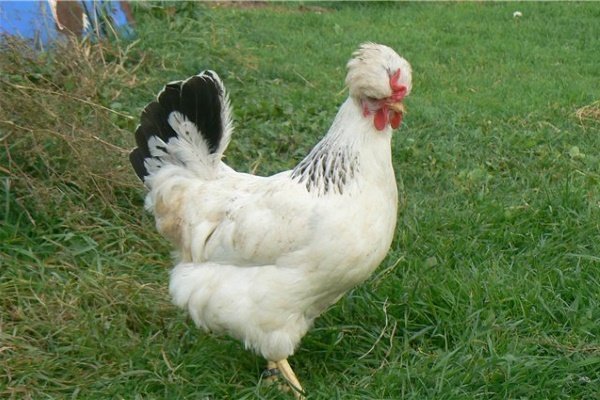

The crested bird is a versatile breed that does an excellent job of laying hens. It has an attractive appearance, due to which it attracts many farmers, because, in addition to high indicators, it pleases the eye with an unusual appearance. It got its name due to the presence of a lush crest. Chickens have a large body, a pronounced muscle relief. The back is wide, raised, the chest is round. The head is small. The shade of the beak is gray-yellow, the shape is elongated with a rounded end.
A distinctive feature is light brown or orange eyes. Some have a reddish tint. Chickens are presented in a variety of varieties. There are black, silver, fawn, white, blue, brown and even multi-colored individuals.
Features of the breed:
- In adulthood, the weight of the bird reaches about 2.5 kg.
- They are distinguished by their accuracy. Birds like an active lifestyle, spacious walking.
- Some individuals are capable of flying up to a height of one and a half meters. This must be taken into account when setting up a poultry house.
- They can become strongly attached to people, eagerly run out to meet at the sight of the owner.
Sexual maturity occurs at 5-6 months. Sometimes the laying of eggs begins earlier or later than these indicators. During the year, the laying hen produces about 180-200 eggs weighing about 56-60 g. Eggshells are cream-colored.
There are a huge number of varieties of eggs in the direction. Many farmers, before engaging in breeding and raising animals, study their productivity, because further profit and return on investment depends on this. Among the many breeds, it will always be possible to pick up a bird that has only positive traits.
0
Lohman Browns
The breed is German. Breeders conceived of breeding a breed with high egg productivity and adaptation to a wide variety of conditions. From one hen, you can get about 320 eggs in 365 days with an average weight of up to 65 grams. The egg-producing period begins at 21 weeks, the peak is fixed at the 30th. The first masonry is characterized by medium-sized products, but gradually it increases in size. The shell is dark in color.
Lomanes gained their popularity due to their unpretentiousness in the methods of keeping, any climatic zone is suitable for them and at the same time productivity is not lost. But the composition of feed mixtures in combination with the number of feedings can affect egg production. With any changes and violations, a noticeable decrease in the amount of production is noticed.
Which hen to choose?
To do this, you need to decide how many eggs the farmer wants to receive per year. Leghorns, tetras, highsexes will bring from 300 or more eggs from one chicken. These breeds will provide the owner with a quick income. In this case, the quality of products will depend on the feed. If an entrepreneur is interested not only in commercial income, but also in aesthetic pleasure, minorks are suitable for breeding. The female of this cross will produce 200 eggs.Of the egg-laying chickens, Russian farmers most often purchase crosses of tetra and leghorns, since they are most adapted to the cold.
Kuchin anniversary
Large products are obtained from birds. The advantages of the breed include the presence of a strong skeleton, a well-developed maternal instinct, and the fact that chickens practically do not degenerate. The breed received its name from the plant of the same name, and the second word reminds of the anniversary of this enterprise. The breed belongs to domestic and does not have significant disadvantages. More than 200 eggs are obtained from Kuchin chickens per year. The egg-bearing period ends only during the change of the feather cover. The average weight of one egg is 55 - 60 grams.
It's important to know. Overfeeding is dangerous for anniversary chickens, as soon as the bird begins to overeat, as its egg productivity decreases. Poultry needs balanced feed with a sufficient amount of proteins and mineral complexes, fresh grass, vegetables and dairy products.
Tetra
Tetra is a versatile breed of meat and eggs. Was withdrawn by one of the Hungarian companies. Chickens practically do not differ from similar breeds. The body is well developed, rectangular, the head is small, the beak is solid light yellow. Dominated by a long neck, medium-sized tail, short white-yellow legs.
A distinctive feature is the silky plumage of red or brown in chickens, white in roosters. The wings of birds are medium in size, tightly attached to the body.
Laying hens begin to lay at 16-20 weeks. Up to 300 brown eggs weighing up to 65 g are produced per year, high productivity of the breed is observed in the first year of life, then it decreases. The weight of a chicken at the age of 4.5 months reaches 1.6 kg.
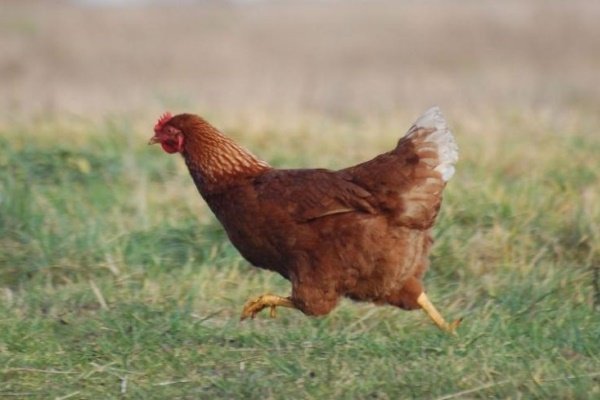

Like all versatile breeds, the Tetra is famous for its dietary, tasty meat. Gains marketable weight rather quickly - in just 4-5 months.
Highsexes
These birds are very loved by farmers for their good immune system and immunity to helminthiasis and fungus. There are two types of white highsex and brown. Both varieties are egg varieties, but the browns have higher productivity. Up to 280 eggs are obtained from white birds in 365 days with an average weight of one egg of about 65 grams. White highsexes need to carefully develop a diet and do not forget about mineral supplements.
Brownies show a higher productivity of over 320 eggs in 365 days, with an average weight of about 70 grams.
It's important to know. Hisex Brown reacts sharply to temperature extremes. If the temperature rises sharply, then the bird begins to consume less feed. This will not affect the number of eggs, but it will affect the quality. Brownies require grain as a component of their feed.
Meat and egg mini chickens
Mini chickens are distinguished by short legs, but they have excellent productive qualities. The color of mini-chickens can be white, red or reddish-brown.
According to their characteristics, these breeds of birds are more related to egg-laying than to meat ones. Chickens begin to hatch from the 150th day of life. Up to 150 eggs are given per year, 50 grams each.
There were cases when mini-chickens gave eggs weighing 100 grams. Such specimens contained from two to three yolks.
The dwarf chicken is characterized by good weight gain and low appetite. Due to the shortened legs, it moves little, which means it spends less energy.
They are characterized by a calm and docile nature, easily adapt to any conditions and feed. Another advantage of mini-birds is their attitude to the breed, and not to the hybrid. When choosing such a bird, the farmer gets a full-fledged individual that is able to reproduce and grow.
Rhodonites
The breed is a success for German breeders. On the territory of our country, they began to be bred not so long ago, already in the 21st century.Our scientists have worked on rhodonites to improve their productive qualities. The average weight of a bird is about 2 kg, they are endowed with the ability to quickly adapt to any climatic conditions and are unpretentious to the feed base. Productive qualities will not depend on temperature indicators, even at low values, about 300 eggs are obtained from one laying hen in 365 days with an average weight of one piece of 60 grams.
Rhodonites need certain conditions:
- in the hen house, the ceilings must be at a height of at least 1.7 meters;
- the room must be equipped with a draft-free ventilation system;
- the optimal temperature indicator is -2 +26 degrees;
- one chicken must account for at least 0.5 square meter;
- it is recommended to feed with special mixtures with the presence of vegetables, green mass, feed chalk and mineral additives. You can give compound feed and wheat grain.
The result of the work of scientists from the United States. The birds have excellent productivity, besides, they are almost omnivorous. The average weight is about 1.5 kg, the egg-laying period lasts 2.5 months, but during this time about 350 eggs can be obtained from one bird with an average weight of one piece more than 65 grams.
Rhode Island
Rhode Island chickens were bred as a result of successful breeding experiments, the breed is considered truly magnificent and original. Birds have a long, strong body, sloping chest and small head. The plumage is dark in color with a shimmering green tint. The back of the bird is wide, indicating the egg production of the breed. The bird is active, mobile, stands firmly on powerful yellow legs.
A distinctive feature of this breed is its unusual color: the feather shaft is bright red, the feather itself is brown. Each feather is dominated by a dark border.
Breed productivity:
- An adult Rhode Island bird can weigh up to 2.5 kg.
- In the first year of life, the bird produces about 200 eggs.
- Eggs weight - 58-60 g, shell color - brown.
The advantage of the breed is the gene for goldenness, tied to the sex. Due to this feature, it is possible to obtain the so-called autosex chicks. At 1 day old, the farmer can tell the chicks by sex. A chicken usually has a spot in the back of the head, and the fluff is brown, sometimes with small light blotches. Small cockerels have white wings.
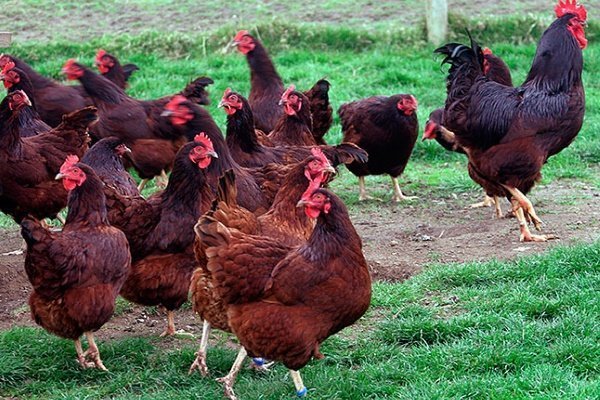

Layers have a good brooding instinct. In general, the birds are unpretentious, they like to walk in freedom for a long time in search of food.
Pushkin breed of chickens
The birds have a variegated striped color, a feather with a white down. The breed is characterized by a calm character and easy adaptation to various conditions of detention. Chickens have good survival rates. Up to 200 eggs can be obtained from one bird per year with an average weight of one piece of about 60 grams.
The gigantic egg was laid by the hen of the Georgian peasant Murman Modebadze. A bird from the Zestafon region of Georgia in 2011 "presented" an egg 8.2 cm long, 6.2 cm wide and weighing 170 grams to its owner.
These data were first recorded by the Georgian Union for World Achievements and Travel. After that, Murman Modebadze put the egg in the refrigerator and sent an application to the Guinness Book so that the whole world would know about his "record holder". The Georgian farmer did not regret spending $ 600 on the application for fixing his achievement in the record book. The name of the chicken that laid this tricky testicle remains unknown.
The previous record-breaking egg weighed only 7 grams less. Chicken Harriet from the city of Eastwood, Essex county in the UK, "noted" the product, the weight of which is 163 grams and a height of 11.5 cm. Its owner, 64-year-old farmer Tony the Guinness Book Committee costs serious money. "I am proud of my Harriet and no official records
"- said Tony.Do you want to swing at this record? Then you can buy an inexpensive turnkey country house and start breeding chickens. And there - how lucky.
It took a lot of effort for the farmer's pet to lay a huge egg. After the laying, her health deteriorated. For several months, the chicken limped on one leg.
Giant are not only bird eggs, but also chocolate eggs. prepared for Easter in Argentina. Its height was 8.5 meters.
Practical chicken breeding is of interest to many farmers and some summer residents who move to summer cottages for the summer. What could be better than a fresh egg for breakfast, laid by your own chicken? However, entrepreneurs with a commercial streak do not bypass the breeding of chickens. From the point of view of organizing a small business, raising chickens for the sake of eggs is most justified.
But is any chicken good for this? Of course not. According to their purpose, chicken breeds are divided into egg-laying, meat and egg, meat, decorative and fighting. And if the egg production of the first in a year can reach 300-350 eggs per hen, then the chickens of the last three breeds are unlikely to give more than 100 eggs per year, and the average egg weight will also differ several times. The largest eggs are found in laying hens of egg-laying and fighting breeds.
Why not take ordinary mongrel chickens into breeding, because their chickens will probably cost less? Of course, this can be done, but good results should not be expected with this approach. A dozen outbred chickens will still feed one family, but it is unlikely that it will be possible to organize the production of eggs for sale. Breeding work to improve and consolidate certain qualities of chickens is not in vain carried out by specialists for several generations of chickens. Breeding a new breed can take several decades, and all in order to achieve the best performance.
Video - The most profitable chicken breeds in poultry farming
High Line
High Line is a relatively young cross, which has managed to gain popularity all over the world in a short time. This chicken is in demand not only among the owners of large factories, but also among ordinary farmers. Today they only speak positively about it.
This is an egg-laying breed of chickens that does not have significant shortcomings and special remarks. Has a calm character, not demanding in care. Layers are characterized by increased resistance to diseases, they are characterized by high hatchability of chickens - about 96%. All this testifies to the excellent profitability when breeding birds.
Egg production characteristics:
- Laying hens bring 240-340 eggs per year.
- The shell color is snow-white.
- Egg mass - 60-65 g.
Usually, eggs are small at the beginning of laying, but after a few months the hens produce large eggs suitable for incubation.
High Line chickens are small, by the 4th month of life they reach a weight of 1.3-1.5 kilos. Adults at the age of one and a half years have a mass of about 2.3 kg. Layers are very beautiful in appearance, slender, a large bright comb flaunts on their heads. There are brown or white individuals. The bird has a small head, a strong yellowish beak, a thick neck of medium length, an elongated body, a wide back. The wings are well developed, tightly attached to the body.
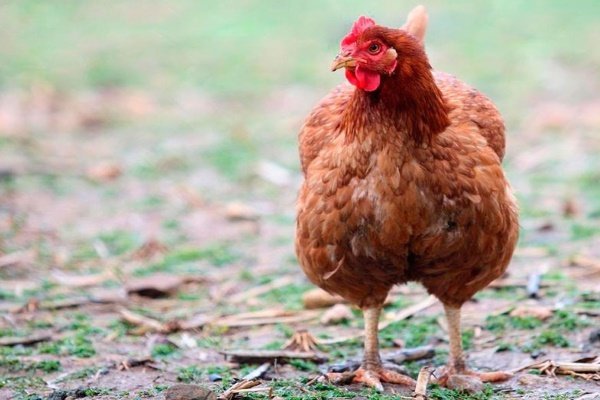

Common signs of egg-laying chickens
So, if the purpose of breeding chickens is to obtain eggs, it is worth dwelling on the representatives of the egg-bearing breeds. Despite the variety of representatives of the breeds of this direction, they all have common features:
- medium-sized birds with light bones, the average weight of birds rarely exceeds 2-2.5 kg;
- wide wingspan and long tail feathers, especially in roosters;
- large bright red crest and lobes of adult chickens and roosters, indicating the maturity of birds;
- absence or minimization of the incubation instinct;
- even birds adapted to cage keeping are distinguished by their mobility, preferably aviary keeping;
- early maturation and the beginning of egg laying at the age of 4.5-6 months;
- good appetite, increased intake of minerals, especially calcium.
General characteristics of egg breeds
Egg-type chickens are characterized by early maturity. The first egg of pullets can be produced as early as 125 days; they lay massively by the end of 5 months.
Representatives of egg breeds and crosses, in comparison with meat ones, are rather medium-sized. Layers are not more than 2.2 kg. Roosters gain weight only up to 3 kg. The skeleton is light, with a short wide keel, well-developed tail plumage, erect foliate ridge, and well-developed earlobes.


The most ancient ancestor of all modern chickens is considered to be wild bank hens weighing 0.7 kg, carrying up to 20 eggs per year. Thanks to many years of work, breeders have managed to:
- increase the size of the bird;
- the number of eggs;
- increase the hardness of the shell;
- reduce the time of egg formation by 3 hours (from 24-25 to 18-21 hours);
- lengthen the egg production cycle up to 2-3 years;
- increase the survival rate of offspring.
However, other changes occurred during the selection process. In many species of hens, the brooding instinct has disappeared. The immunity of some breeds is striking in its immunity to certain diseases.
Let's take a closer look at which chickens lay the largest eggs using the example of common chicken species.
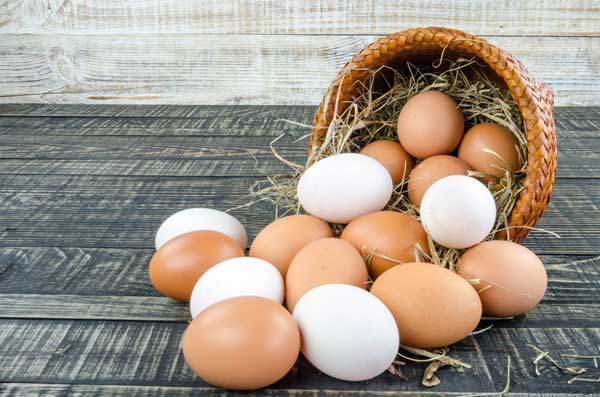

Characteristics for comparing the quality of the products obtained
What are the advantages of egg-bearing chickens, what qualities have breeders improved in them for centuries? Of course:
- egg production;
- egg weight;
- the hardness of the eggshell;
- disease resistance;
- survival of offspring;
- lack of aggression;
- unpretentiousness in the diet.
The efforts of the poultry farmers have given their result: modern representatives of the breeds have collected the most developed these qualities.
Video - Choosing laying hens for breeding
Leghorn is the ancestor of all modern laying hens.
The Leghorn breed of chickens obtained in the 19th century still remains unsurpassed. Almost all modern egg-bearing breeds are obtained by crossing Leghorns with other chickens. Leghorn hens hold the records for the maximum number of eggs per year (371 eggs), the maximum egg mass (454 g), the largest number of yolks in an egg (9 yolks).
Leghorns lay their first egg as early as 17-20 weeks of age and continue to lay, under comfortable conditions, almost all year round. One laying hen produces from 250 to 300 eggs per year, and in terms of average, second only to German Broken Brown and Highsex. The average egg weight is 60-62 grams. White leghorns lay white eggs, variegated brown eggs. The average weight of a chicken is 1.5-1.7 kg, a rooster is up to 2.5 kg. The hatchability of chickens in the clutch is up to 92%.
Leghorns have one characteristic that often prevents them from being productively kept outside of factories. They do not tolerate extraneous noise and have a tendency to noise hysteria.
Under the influence of noise, birds can begin to beat against the wall of the hen house, rush to the wire fence, injure themselves and their neighbors.
In the course of the experiment, it was proved that Leghorns exposed to noise decreased egg production, while chickens, listening to calm, light music for 6-8 hours a day, began to lay 10% better. In addition, these chickens have reduced immunity and are susceptible to many diseases.
Birds of the Leghorn breed are distinguished by a proud posture. These are medium-sized, but tall chickens, with a triangular body, a bright red comb and catkins. The scallop in chickens hangs to one side, in cockerels it stands upright. In growing chickens, the scallop and catkins are light pink; when entering the egg-laying period, they become bright red. The elongated back is slightly concave in the middle, the chest is protruding forward. Very mobile, light birds.
White Leghorns are most widespread, characterized by rapid acclimatization.Sometimes there are also pies that do not quickly get used to new conditions, but they carry “yellow” eggs that are in the greatest demand among consumers. In total, more than 40 varieties of the color of chickens of this breed have been registered.
White Russian - Advanced Leghorn
Chickens of the White Russian breed are a hybrid of Leghorns and local Russian mongrel chickens. Work on improving the Leghorns and breeding the Russian breed lasted 24 years and ended in 1953.
Since then, the Russian White is considered to be one of the best egg-bearing breeds. Egg production is slightly lower than that of Leghorns - 230-240, in some cases up to 300 eggs per year. The mass of an average egg is 55-56 grams. The size of the chickens is slightly larger than the Leghorn progenitors - 1.6-1.7 kg for a chicken, 2-2.6 kg for a rooster. The crest is large, leaf-shaped with 5 teeth, bright red in adults.
The undoubted advantages of the breed include stress resistance, resistance to cold weather and many chicken diseases. Chickens of this breed are devoid of aggression towards fellow tribesmen, are balanced, and ripen faster.
As a result of breeding work, a subspecies “Russian Snow White” was obtained, some of the chickens of which are already covered with white, not yellow, down at one day of age. In addition, the subspecies is focused on cold resistance and tolerates temperatures up to 10 degrees below normal.
Loman Brown is the most egg-bearing breed
The record holders for average egg production per chicken - 300-320 eggs per year - are German medium-sized brown hens of the Loman Brown breed. Breeding Loman Brown is very popular in Russia, they are well acclimatized. Perhaps their popularity is also due to the fact that even day old chickens of this breed can be easily differentiated by gender: the down of the hens is fawn, and the cockerels are white.
The producing characteristics of chickens of this breed are very high. In addition to excellent egg production, they are distinguished by a high average egg weight - 63-64 grams. Adult chickens weigh from 1.8 to 2 kg, males up to 3 kg. Representatives of the breed are distinguished by a calm temperament, stress resistance, friendliness. They easily tolerate cage keeping, although, of course, keeping on the walk is more preferable. They enter reproductive age at 5.5 months, after which they rush well for another 20 weeks.
Hisex - endurance and productivity
In the course of breeding work, Dutch scientists in 1970 bred another Leghorn hybrid, which is extremely popular now in Russia, - highsex. Because of the color, some of the chickens are classified as highsex brown, and some are classified as highsex white. Officially, highsex is still considered not an independent breed, but a hybrid of Leghorn, which does not prevent these chickens from being widely bred on farms and poultry farms around the world.
Hisex brown is more productive than the white hybrid, the egg production of chickens of this breed reaches 310-350 eggs per year, and white chickens of the same breed - 300 pieces. The weight of an egg in a white hybrid is on average 60 grams, in a brown one it can reach 70 g. The weight of white chickens is 1.7-1.8 kg, and that of a brown one is 2.3-2.6 kg. Both hybrids are distinguished by good resistance to infectious, fungal and helminthic diseases, undemanding to feed and tolerance of very low temperatures.
In general, domestic chickens prefer the Hysex Brown hybrid, as the most prolific, egg-laying and tenacious.
Minorca - large eggs and aesthetic appearance
An original looking breed that farmers often breed for aesthetic reasons. Black plumage, bright red comb and large white catkins give chickens and roosters an impressive appearance. For industrial breeding, the breed, alas, is not suitable, because it is very demanding on the conditions of detention, and therefore continues to remain in the yards of small chickens.
In addition to good (up to 200 eggs per year) egg production, minorks can boast of a delicate taste of meat, very early ripening of young animals, and most importantly, eggs that are just gigantic by chicken standards (up to 80 g). This breed has one more advantage - chickens rush almost regardless of the season. The breed has been specially selected to lay the largest possible eggs in a dense shell.The disadvantages of the breed include its effeminacy: in cold weather, the scallops and legs are easily exposed to frostbite, the minorks do not tolerate high humidity, drafts, and cold.
Tetra SL - a humble laying hen
The Tetra SL cross, which is not so common in small farms, however, has good egg production rates - 300-310 eggs per year. Outwardly, Tetra hens most of all correspond to the stereotyped representation of the concept of "pied chicken".
They rush, with proper feeding, almost every day all year round. For regular egg laying, it is necessary to provide sufficient calcium in food and light in places where birds are kept. Dark brown eggs weighing 64-65 grams are laid. This hybrid is often considered as a meat-egg hybrid, because the taste of meat is good and chickens gain weight quickly, but, like all egg breeds, not too large.
A big plus is the ability to sort the chicks by sex already at day old (by the color of the fluff). Chickens have a fawn or dark brown color, a neat small comb, a small head and lean body shape, a short tail. Males at the age of chicks are white, gray or black. Growing up, most of them fledge in white or white with individual black blotches of roosters.
Let's summarize
You need to choose the breed of chickens that you will breed based on the following considerations:
- breeding purpose: for family and friends, for the periodic sale of eggs, for the uninterrupted production of egg products;
- the area allotted for breeding chickens;
- keeping conditions: cage, aviary or mixed keeping of birds is supposed to be established;
- the region, its climatic features, the degree of adaptation of the selected breed to these conditions;
- availability of chicks of the selected breed, both in price and, if possible, to get near your site.
Only after carefully thinking over all the nuances of future breeding and organizing premises for keeping chickens, after reading detailed literature on breeding the selected breed, it is worth buying young animals. Subject to these conditions, laying hens will delight you with large, beautiful and even eggs all year round.
Chicken eggs - valuable and nutritious
product. Keeping chickens in their own backyard or at their summer cottage is a very profitable occupation, so many are engaged in breeding these unpretentious birds.
Before purchasing laying hens, it is important to know at what age does egg production begin
pullets. By the way, it should be noted that it mainly depends on the breeds of chickens. Some species begin to lay eggs after the seventeenth week of life. On average, this age in normal egg-laying breeds occurs at the twenty-second week.
If the chicken belongs to the meat species, then sometimes eggs can be expected from them only seven or eight months after hatching. But in many ways, of course, this long-awaited period depends on how well the birds feed.
And also the area on which the chicken family is kept should be optimal and not too cramped: one square meter for five individuals will be quite enough for free range.
Sometimes poultry farmers, in the absence of eggs, begin to blame the rooster, they say, he does not perform his duties well or does not exist at all. Can a hen lay eggs without a rooster? The answer is unambiguous: it does not affect productivity in any way. The rooster is needed only for offspring to appear. If the breeding of chickens is not planned on the farm, then it is possible not to have males. Do chickens rush without a rooster? Yes, of course, she doesn't need a male at all. To understand how chickens lay eggs, it is enough to study the maturation process.
If the farmstead is formed from hens of meat breeds, and this is: Plymouthrock or Brahma, then the eggs can be expected by the eighth month of the chicken's life.
But as already noted, productivity depends on how the inhabitants of the poultry yard are kept and what they eat, as well as on their health.
Adler silver
The Adler Silver breed got its name in honor of the city where it was bred. The uniqueness of the bird lies in its excellent acclimatization in various weather conditions. The bird has a beautiful silvery color, a dark edging of the wing. Chickens look neat, their neck is low, their eyes are dominated by a copper tint, legs are bright yellow, the body is proportional.
The puberty of an animal occurs at 5 months, sometimes earlier. Already at the age of 1 year, the laying hen weighs up to 2.5 kg. The Adler silver laying hen produces from 180 to 250 eggs per year. Shell color - light brown, weight - up to 60 g.
On the head there are red lobes, a yellow beak. Birds have a rounded, small tail. The advantage of a bird is a calm disposition, friendliness. Most farmers speak positively about poultry. Noting their docile nature.
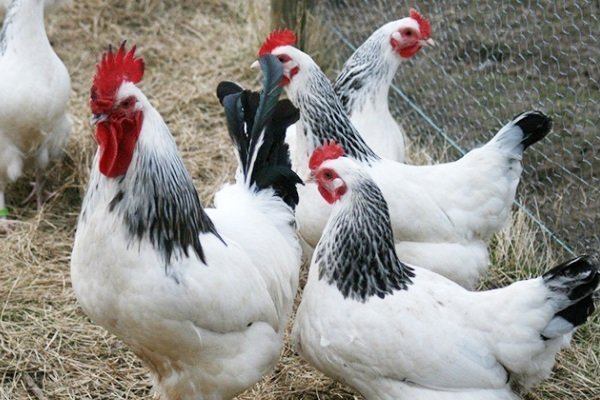

When do pullets start to lay?
With proper organization of nutrition and without various kinds of complications in the form of diseases, the onset of laying in young layers should be expected at the twenty-second week. The eggs will be small at first, weighing about forty-five grams. But they represent a great value
: the yolks taste much better, but the rapid growth leads to the fact that after a while their weight will reach the prescribed sixty grams.
The pullets have the main difference: a bright red comb. Unmatched chickens have a small scallop and a pale pink color.
It is necessary to monitor the weight of the chickens, because if, for some reason, pullets began to rush ahead of time and did not gain the required mass, the products will also be small. To achieve maximum effect, the egg-laying bird must weigh at least 1.4 kilograms.
In order to receive products continuously, chickens must be purchased in different batches with a certain age interval. The older individuals lay large eggs, while the young at this time are just beginning the process of bringing the finished product. For sale, it is best to have eggs of different categories, this will provide a price jump that allows you to pick up buyers of any audience. There is a small drawback to this idea: isolated rooms are needed to ensure hygiene standards. When changing the batch, it is advisable to completely clean the chicken coop and carry out disinfection so that diseases from the previous generation are not transmitted to young people.
After the end of the egg production period, the chickens are sent for slaughter. But it should be remembered that the older the laying hen, the more tough its meat is. It's a good idea to use such a product for broths. Usually in poultry farms, laying hens are sent for meat after eleven months of egg laying. On private farmsteads, this period lasts longer.
Any owner who just wants to engage in poultry farming is concerned about the question: what is the profitability of the business. It is almost impossible to get an exact answer. Only approximately can one calculate what the costs will result in and what the profit will be. To decide on the purchase of birds, it is enough to find out the answers to the questions:
- How many eggs does one bird lay?
Chickens of different breeds have different productivity. And proper maintenance and nutrition affects egg production. Most often, this periodicity obeys the formula: one egg per day. Theoretically, the chicken cannot take more. But sometimes it happens that once every two days. In a large courtyard, it can be difficult to determine which of the existing inhabitants decided to arrange a time-out. A mature egg is located in a membrane called a follicle. The egg is advancing about 12 hours
, forming protein and other shells around itself.
40 minutes after that, another egg begins to move through the oviduct. Therefore, one day is quite enough to get the finished product. So the answer to the question has been found: do hens need a rooster for laying hens?
It also becomes clear how many eggs a laying hen lays per month. Theoretically, it turns out that this figure will be thirty. But this is at best. There are various reasons why a bird might take a break. In particular:
- Malnutrition;
- Short daylight hours;
- Disease.
Meat breeds can yield about 150 units per year, egg breeds are much more. This number fluctuates from 200 to 260 pieces
... Formula: One Egg a Day Doesn't Work. This is possible in summer, but egg production decreases in winter. To increase productivity, some add extra lighting and heating.
Young chickens rush more often in the first year of their life. Then productivity is lower. Therefore, in large farms, farmers seeking more profit are constantly updating their livestock. But in a small backyard with individual care, there is a chance that they will lay eggs at the same frequency. 2-3 years
.
In warm seasons and with an increase in daylight hours, birds rush more actively than, for example, in winter. Extending daylight hours due to artificial lighting is the only way out. But it should not exceed 14 hours
, in order to be able to fully relax. You can also insulate the chicken coop. Air humidity can be in the range of 50-70 percent.
Andalusian chicken
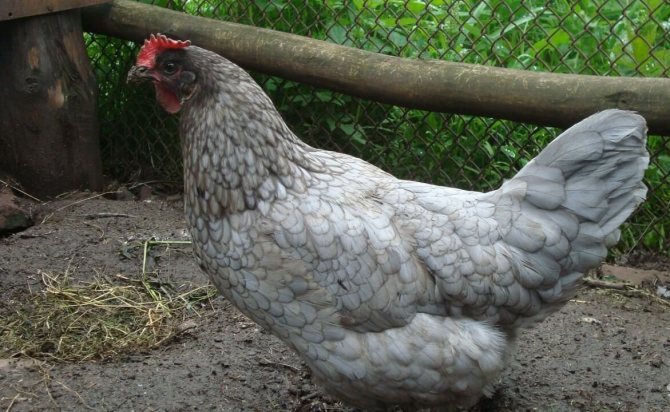

Chickens with an unusual color find themselves only in private farmsteads, since the breed is not used on an industrial scale, due to the low (industrial opinion) egg production.
Young growth begins to lay at the age of six months, with eggs of 55-62 grams. The productivity of eggs is 185 pieces per year. Andalusian chickens can also be used for meat purposes, the weight of chickens reaches an average of 2.7 kg. The instinct for incubation is underdeveloped, but it is possible to get a brood with a high survival rate. However, in order to obtain numerous offspring, it is better to use an incubator.
And a little about secrets ...
Have you ever experienced unbearable joint pain? And you know firsthand what it is:
- inability to move easily and comfortably;
- discomfort when going up and down stairs;
- unpleasant crunching, clicking not on their own;
- pain during or after exercise;
- joint inflammation and swelling;
- unreasonable and sometimes unbearable aching pain in the joints ...
Now answer the question: does this suit you? How can you endure such pain? And how much money have you already "poured" on ineffective treatment? That's right - it's time to end it! Do you agree? That is why we decided to publish an exclusive interview with Professor Dikul, in which he revealed the secrets of getting rid of joint pain, arthritis and arthrosis.
Attention, only TODAY!
Maranas are one of the most interesting chicken breeds. It is they who can be called the chickens that lay the golden eggs. One of the main features of the breed is very large eggs of a beautiful red-brown color. Therefore, they are also called "Easter", because it is very likely that they were dyed with a decoction of onion peels.
Marans were bred in France, in the city of Marens, and in 1895 were registered as a separate breed. In the last 10 years, they have become very popular in Russia due to their outstanding characteristics.
Minorca
If you remember how many breeding experiments most modern chicken breeds have survived, then you can be amazed. But still Minorca has remained unchanged from the moment of its appearance to the present day. A characteristic feature of such a chicken is a bright red scallop and white earrings. The main color of the Minorca's plumage is black, although it is said that snow-white individuals also existed many years ago. The Minorca is much larger than Leghorn, as it weighs about three kilograms, but much less, for example, the Jersey giant, while the weight does not affect the intensity of the egg-laying. That is why a bird can bring up to two hundred eggs in a year.
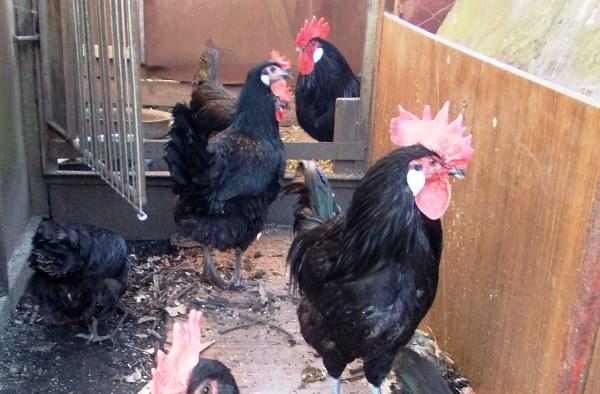

Even in winter, the egg-laying does not stop, which is very convenient for the household, since the egg is a very nutritious product. It can be consumed by humans and can also be used as a winter feed for poultry. This property of Minorca is especially relevant for those who sell eggs, since the business is moving from the seasonal to the year-round, and accordingly, the income from it is growing.
Features of appearance
The appearance of marans is very attractive. Their bright plumage retains its beauty throughout the year. According to the description of the breed, these are quite powerful birds, but ideally they do not give the impression of being heavy and clumsy.
Activity and mobility are combined in them with a rather calm character, which is convenient for mixed content.
Two roosters and hens of black-copper color.
Average body size, good build with dense plumage. The body is quite long, the shoulders are wide and high. The strong and long neck is covered with long feathers forming a "collar". A powerful chest, a developed belly, short wings tightly pressed to the body, a well-developed tail give the impression of a strong bird.
The head is of medium size, long and slightly flattened. The ridge is medium, simple, with sharp ends, rough texture. The lobes are red, delicate, the earrings are also red, long. The face is red, the eyes are orange-red. Beak is yellow, strong, slightly curved.
Legs are medium in size, most often white or slightly pink. But in dark colors, the legs can be gray or dark gray. Metatarsus and toes are slightly feathered.
In a black-copper color, the maran rooster looks very impressive, especially in bright sunlight. Blue-black tail feathers cast green.
Hamburg
The bird was bred in Germany by crossing chickens brought from other countries with local individuals. The Hamburg chicken has a slender, elongated medium-sized body, a long neck, and a high chest - this gives it a proud look. The comb of the Hamburg chicken is pink, the earlobes are white.
Due to the fact that several breeds of chickens were used in breeding for poultry, their color is different. There are black, fawn, silver-striped, partridge, blue, golden-striped, spotted birds.
Laying hens weight - 1.5-2 kg, roosters - 2-2.5 kilos. For a year, one laying hen produces up to 380-400 white eggs weighing up to 50 g.
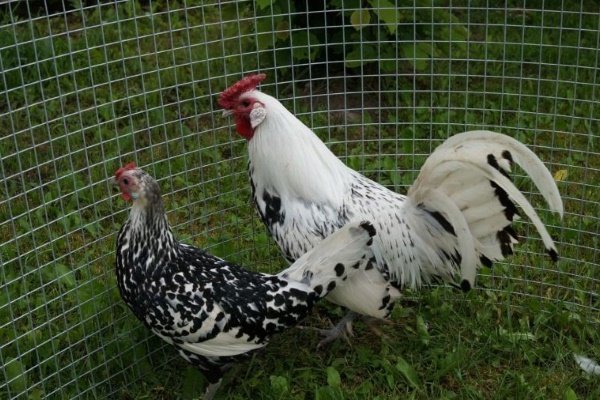

Maran color options:
- black and copper - the most popular, shown in the photo above;
- silver cuckoo;
- golden cuckoo;
- white;
- wheat;
- Colombian;
- the black;
- black-tailed buff;
- silver-black (birch), etc.
There are dwarf subspecies of the Maran breed, which differ from the usual only in size: the mass reaches a little more than 1 kg in males and 0.9 kg in chickens.
In the photo - a dwarf cuckoo hen.
Features of keeping and breeding
All of the above types of chickens it is considered to be thoroughbred, so there are several tips for proper care of them. The appearance of chickens and the egg production itself directly depend on the conditions of detention. It is known for certain that those representatives of this species who receive the daily intake of necessary vitamins, even the egg yolk of a rich orange color, and the eggs themselves are much larger.
For the correct arrangement of the future home of thoroughbred poultry, it is necessary to take into account some important aspects:
- The temperature regime must be observed;
- Choose the right size of the room;
- Correctly build a ventilation system;
- Choose the right lighting sources;
- Equip perches correctly;
- Correctly equip and arrange feeders and drinkers;
At low temperatures, the bird can get frostbite, egg production will drop significantly. At high temperatures, domestic hens will begin to lay eggs with very thin shells, or even no shells at all.
Experienced breeders recommend taking special care when choosing a room.It is recommended that each individual allocate at least 0.5 meters of space. Cementing the floor is not recommended, as the bird can freeze its paws in the cold season. It is best to make the floor loose or wooden.
The simplest solution in ventilation equipment will be a window. In the warm season, you can leave it open, this will provide fresh air... In winter, the window will be closed all the time, which will save heat in the chicken coop.
The egg production of a bird directly depends on the correct lighting. When the individual begins to rush, it will need 12 hours of daylight. The best and most economical option would be a regular light bulb.
In order not to heat the chicken coop once again, breeders recommend laying a mat on the floor. It will absorb excess moisture from the bird.... And in winter, the litter will support the temperature in the hen house is about 32 degrees Celsius.
Read also: Oryol breed of chickens: description, photos, reviews
The presence of perches and nests in the hen house is required. These representatives of poultry are not able to sleep on the ground and they will be more comfortable in the nest to lay eggs. It is necessary to correctly calculate the length of the roost poles. Each individual must have at least 30 cm of free space.
What to feed the hen
Fertility and weight gain directly depends on proper feeding. Although chickens are considered one of the most unpretentious types of poultry and are fed to them almost everything: scraps, weeds from the garden, the remains of feed from goats, pigs and sheep. Choosing the right feeding regimen is imperative.
In addition to the generally accepted grain diet, chickens must be given plant and animal food. Proteins and carbohydrates are essential for egg production in chickens.
A useful component in the diet of chickens there will be various additives, for example, sunflower seeds, pumpkin seeds, legumes, cake. Often, due to a lack of calcium, chickens suffer from various diseases, therefore, it is imperative to add crushed chalk, ash, table salt to the diet of chickens.
You cannot do without green forage. Grass must be given to chickens. This will help to get the missing minerals, vitamins and moisture, so needed by chickens at the cellular level.
Chickens love dill, young pea shoots, lettuce, nettles. In winter, chickens are offered grass hay, which is harvested in advance from the summer.
Finely chopped vegetables and fruits can be added to the main feed. In winter, this top dressing will be irreplaceable.
Productivity
According to farmers, the weight of roosters reaches 3.5-4 kg, chickens - 2.6-3.2 kg. One-year-old birds already weigh 3-3.5 kg in males and 2.2-2.6 kg in females. The meat of both chickens and roosters is tasty, good for soup and for second courses. The carcass has an attractive appearance, the skin is a pleasant yellowish-white color. The fat tastes good.
But using marans as a source of meat is quite wasteful, although they are classified as meat and egg breeds. Their main value is in large and beautiful eggs of good taste.
Reviews of the breed claim that the eggs of this breed can reach a mass of up to 85 g, while eggs weighing 60-65 g are considered large in egg breeds, and values up to 100 g are recorded in the breed standards!
Marans begin to rush at 5-6 months. The first eggs are relatively small, 55-60 g, may not have such an intense color. But subsequently the color becomes brighter, more saturated, darker, and the size increases.
Their color reaches the highest intensity by the age of one year old laying hens and lasts for about a year. In older hens, the color of the egg becomes lighter.
Egg production, according to Russian farmers, ranges from 130-150 per year. But it is strongly influenced by the conditions of keeping and feeding.
The carcass of chickens of the Maran breed (pictured) has an attractive presentation due to its yellowish skin and compact structure.
Dominant
These are crosses bred by Czech breeders.Popular for breeding by inexperienced breeders. Birds are considered not only good laying hens, yielding large eggs, but also animals with a high survival rate in adverse conditions. Distinctive features of the dominant - aesthetic appearance, high egg production, unpretentiousness and increased resistance to diseases.
The black Dominant has the largest eggs, they have an excellent hatching instinct. Dominant Sussex brings up to 320 eggs per year, animals grow quickly and gain weight. The male of these crosses can weigh up to 3.2 kg. Dominants produce eggs with brown shells, sometimes white. The weight of one egg is up to 65 g.
Due to the dense plumage, dominants are able to tolerate cold well. They are kept in different conditions, but it is better when the animals have free access to walking. Several European countries raise birds in ecological poultry conditions. Dominants are not picky about food; while walking, they can independently get their own food.
Dominants are not the same cross from different breeds. They are distinguished by plumage color, beak, ridge shape, and other, usually external, characteristics. There are even birds with blue feathers. Sexual maturity occurs by 5 months.
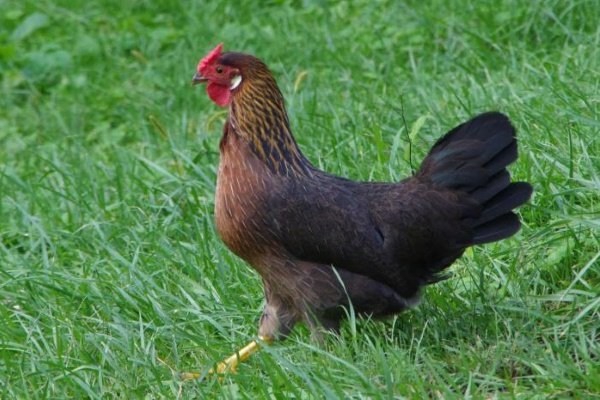

High productivity of chickens lasts up to three years, then egg production decreases.
Egg features
The eggs of the marani have a rich red-brown color. The color intensity is considered to be an indicator of high quality. It is customary to measure it on a special scale. Indicators of 4-5 points on a scale are considered acceptable. But for incubation and preservation of breed signs, experts recommend using an egg of at least 6-7 points.
The best representatives of the breed have a shell color of up to 9 points - a very dark, almost black color.
The characteristic color of the shell is obtained when passing through the oviduct. This is proved by the fact that if you scratch its surface, then a light shell is exposed. Due to the additional pigment jacket, the shell becomes thicker.
Some farmers believe that it is possible to influence the shell color by introducing dark colored feed into the diet of chickens. These are carrots, table beets, onion peel decoction, and other types of vegetables with dark pigmentation.
At the same time, many note that crossing the maran-rooster with chickens of other breeds leads to the appearance of dark-colored eggs.
In France, competitions are often held where the eggs of the maran are judged by their appearance: by the color of the shell, brightness and shape. The peculiarity of eggs is that they often have an almost regular oval shape, when it is difficult to distinguish between a sharp and a blunt end.
In addition to beauty and excellent taste, Maran eggs have another valuable property: they have an extremely thick and strong shell. Thanks to this, they almost never contract salmonellosis, which is considered a proven truth among French farmers.
They are in great demand among the population due to their size and unusual color. In addition, a strong shell makes it safer to transport and store valuable products.
Broiler specificity
Many novice poultry farmers are planning to breed broilers at home. The main thing is to provide the young growth with complete food. At the very beginning of breeding, chickens should be given starter feed, where it is useful to add a finely chopped chicken egg. Water should be poured into special drinkers to prevent chickens from accidentally getting wet. Young animals should have food in the feeders all the time, but they should be changed regularly, avoiding souring.
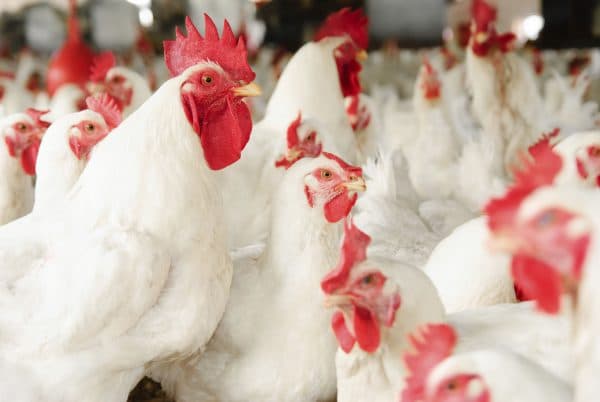

Broyels do not provoke clashes, and, despite their large size and considerable strength, they often suffer from attacks by relatives of small breeds, which are distinguished by more aggressive behavior.
Gradually, bone meal, chalk or crushed eggshells can be introduced into the diet. Be sure to add fresh spring greens.At the beginning of cultivation, the temperature should be at least + 350C, which is gradually lowered by about 2 degrees per day.
Breeding marans
For incubation, select large eggs weighing at least 65 g. They try to select the darkest ones in order to preserve hereditary qualities. At the same time, it is desirable that the parents have a good exterior that meets the breed standards.
The main problem in incubating marans is the thick shell and dense shell of the eggs. If chicks are weakened, they often cannot peck at the shell or break the shell. This leads to the death of chicks, if you do not help them hatch in time.
In order to avoid the death of chicks from lack of oxygen under a thick shell, they try to ventilate well in the second half of the incubation. And in order to avoid drying of the embryo to the shell membranes, they try to turn the eggs more often. To maintain air humidity in the last period of incubation, they are sprayed once a day from a spray bottle. Humidity in the last days should be about 75%.
To avoid overheating of the embryos, the appearance of such shortcomings as crooked fingers, experienced farmers recommend reducing the temperature by 0.2 ° per day from the 16th day, so that by the time of hatching it is 36.8-36.9 °.
Like other birds with large eggs, the eggs of the maran are placed on their side, rather freely. After the start of biting, make sure that the bite site does not end up abutting the floor, wall or other egg. Some farmers prefer to help the chicks by carefully breaking the shells in a circle from the place of biting.
Subject to the rules of incubation, marano chickens hatch amicably enough on the 21st day. If you entrust incubation to a reliable chick, you can solve all the problems associated with raising chickens in a natural way.
The process of hatching of marans has begun: there are already two newborns and a lot of bites.
The main advantages of cage keeping chickens
This method of breeding is quite popular, since in most cases it is impossible to organize free range due to lack of space. Here are some of the advantages of this way of keeping chickens:
- significant reduction in maintenance costs;
- the ability to accommodate many individuals in a relatively small room;
- fast weight gain;
- savings in feed as a result of reduced bird activity;
- ease of collecting eggs;
- protection from predators and intruders.
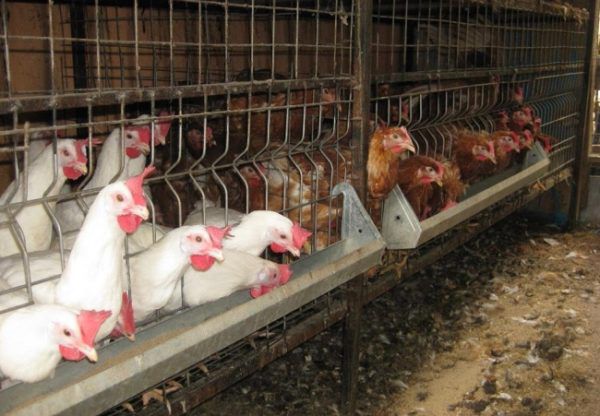

Chickens in cages get fat faster, but live less
However, such maintenance significantly reduces the quality of life, as a result of which the laying hen lives less. She can develop various diseases. Crowded content increases the likelihood of an epidemic. It is also constantly necessary to additionally use mineral feed.
Important! This breeding method is suitable for regular layers that need to be cull quickly. But if the farmer plans to independently breed new breeds, then it is necessary to provide the chickens with a fairly large room where they could feel most comfortable.
Chick care
Weekly chickens are taken outside for a couple of hours. From the age of two weeks, you can keep them in the shed all day, and bring them home only at night. From a month, you can transfer chickens to the barn for good.
Up to 2-3 months, chickens need supervision while they walk. In general, the breed is quite hardy and unpretentious.
Feeding
- The first three days are fed with boiled yolk and cottage cheese every two hours, including at night.
- On the fourth day, you can add crushed millet or corn grits. Make sure that the entire portion is eaten. Feed 5-6 times a day.
- From day 6, finely crushed shells, grated shells, ash are introduced into the diet.
in the photo - a four-day old chicken Maran from Stanislav's farm from the city of Stupino, Moscow region.
- From 10 days you can feed 4 times a day. Finely chopped clover and alfalfa, grated carrots are added to the diet.At first, they are pre-scalded with boiling water.
- From a month you can add grated beets. Earlier feeding of beets can cause digestive problems.
- 2 times a week to water the chickens with a pale pink solution of potassium permanganate. Sand or fine gravel should be available. They help to grind food.
- From the age of three months, it can be transferred to an adult diet. It is not very different from the diet for other hens of meat and egg breeds.
Fans of this breed are still arguing which came before - a chicken or an egg. Some consider the color of the egg to be the main feature of the breed, others - the exterior. But the important thing is that one is impossible without the other.
What is better breed or cross?
It is difficult to unequivocally answer the question of which purebred hens or cross is better. The fact is that this moment depends on whether the breeder plans to replenish the livestock or create a new herd. At the same time, most farmers note:
- if you plan to buy chickens at specialized incubation stations, it is better to purchase crosses;
- if you plan to breed chickens on your own, give preference to breeds. Since the cross is obtained by crossing many different breeds;
- well, if the breeder plans to raise chickens for further egg production, give preference to crosses.
As a rule, the active egg production of the cross appears in the first two years. Then, the number of eggs decreases. In view of this, it is recommended to renew the livestock every 3 years.
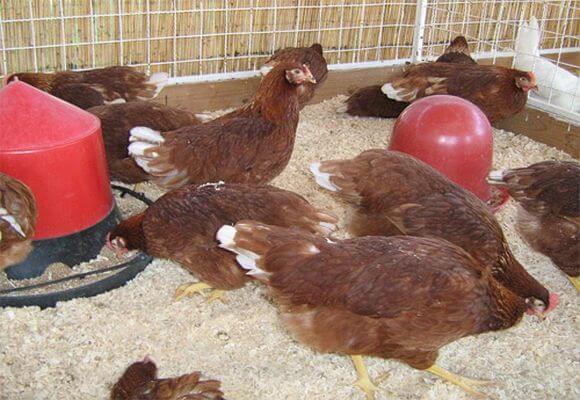

What Experienced Farmers Say
All egg breeds in the household are profitable. When asked what breed of egg-laying hens it is better to choose, the answers vary greatly: someone thinks that it is better to choose an egg-laying breed, while someone claims that there is no one better than crosses. Russian white chickens have proven themselves well in our area. They have shown themselves excellently in terms of egg-laying qualities, and they adapt well, and are not picky about care. Highsexes and representatives of the high-line breed have collected good reviews.
For the most part, it all depends on the weather conditions in the region, area and goals. The most important criterion in choosing a bird is economy, ease of care, endurance, good immunity and performance. It is worth considering the fact that some breeds simply will not be carried without a certain compound feed, which costs a pretty penny. This applies more often to foreign breeds, so it is better to initially buy not very expensive egg breeds by considering the description, and then experiment.
Domestic representatives
The breed of chickens is the most egg-laying after the Leghorns - the Russian white. This species is a hybrid of the previous representative and outbred chickens. In terms of egg production, they practically do not lag behind Leghorns - 240 eggs per year on average, and sometimes even 300. In terms of weight, they practically do not differ from their progenitors. The scallop is large, leaf-shaped.
Unlike its ancestors, this breed is stress-resistant, non-aggressive. The main task of breeding work was to improve production qualities and improve immunity, which was quite successful. In the household, they are simply irreplaceable. This breed of chickens is especially well suited for beginners in poultry farming, because it does not require any specific skills to grow it.
Already from the name itself, it is clear that the representatives of the species are snow-white. Their main difference is that the color of the plumage is even, without yellowness. Subsequently, as a result of selection, a subspecies of snow white was bred. In this subspecies, even in chickens on the first day, part of the cannon is white, not yellow.
What are the criteria for choosing a chicken?
Many farmers are faced with the question, which breed of chickens is the most egg-laying? First of all, you need to decide for yourself for what purpose you will breed chickens:
- for the family;
- for family and close friends;
- for sale;
- to sell egg products.
Then you need to decide what area you are able to allocate for the chicken population. Next, you should take into account the features of the breed that you liked. On the Internet, you can view all egg-laying chicken breeds along with photos, descriptions and names. In addition, the relevant breeding and growing literature should be read.
Czech golden
This breed was brought to us in the seventies of the twentieth century. Representatives of the species are distinguished by their diminutiveness and unusual decorative color. The weight of the individuals is 1.5 kg. Birds reach sexual maturity at the age of 150 days.
Annual egg production rate 180 pcs. Testicle weight 53g, brown-cream color. The cellular method is not suitable for their maintenance. The birds are extremely active, therefore they need constant walking, otherwise their egg production will simply drop.

